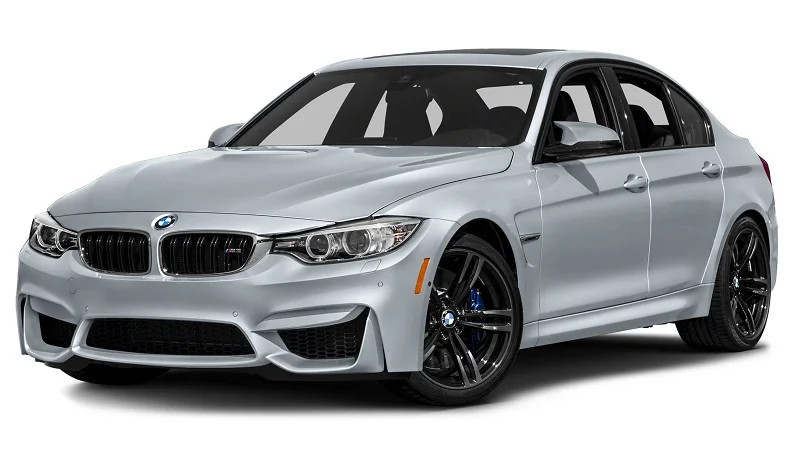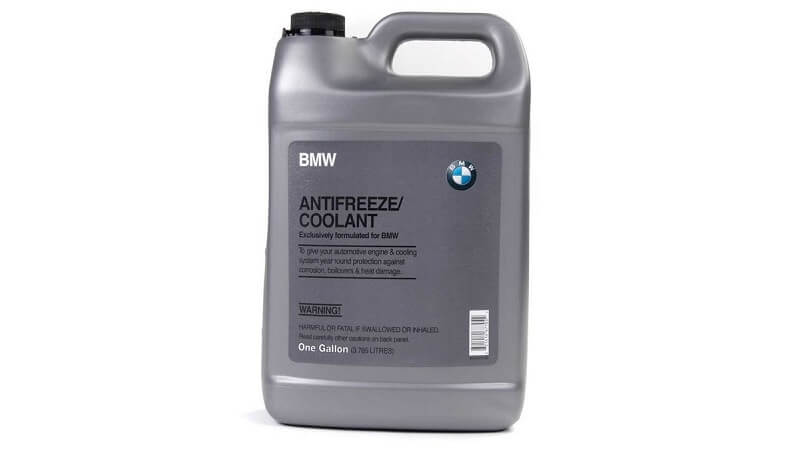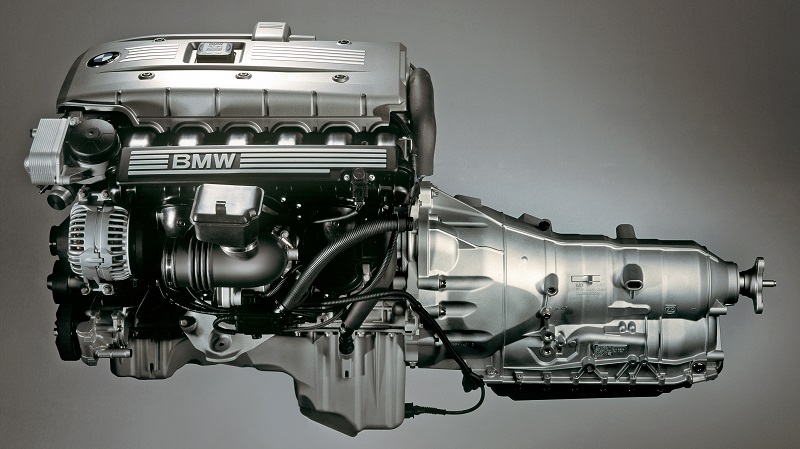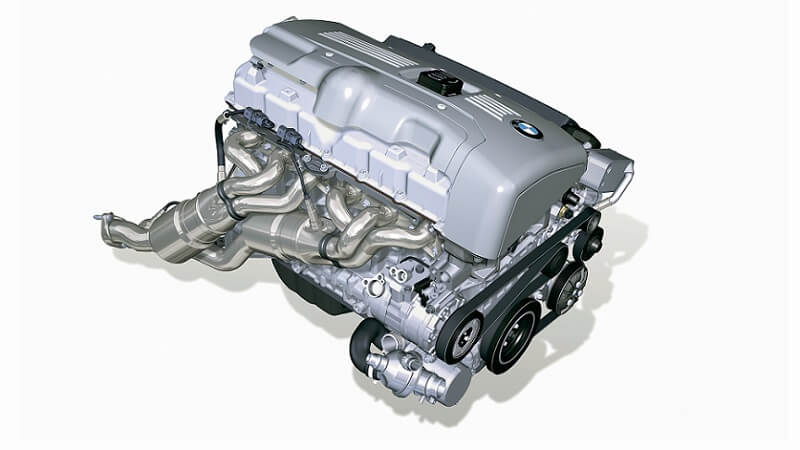You don’t have to be a fan of the brand to appreciate a BMW M3. Today, the M badge is one of the most reputed performance divisions in the motorsport world, and that’s predominantly thanks to the success of the M3. Interestingly, BMW started selling the M3 to the public only because it was forced to.
The manufacturer had intended to race in Europe, and FIA Group A regulations demanded that 5,000 road-going cars were to be manufactured to homologate a car for competition use. So how did the M3 go from being a by-product to one of the most sought-after performance cars in the world? Here’s everything you need to know about the BMW M3.

BMW M3: The Birth of an Icon
The year is 1986. BMW had established itself as a formidable force in the European car market and was progressively expanding overseas. However, at the time, the company didn’t spend a lot of its resources on its motorsport ambitions.
Mercedes-Benz, on the other hand, was dominating the German racing scene. Their 190E 2.3-16 took home several speed and endurance titles, like the prestigious Deutsche Tourenwagen Masters (DTM), and the brand soon became synonymous with performance coupes and sedans.
This was a German racing series and Mercedes’ supremacy, naturally, didn’t sit too well with other local manufacturers, like BMW. Their response? To take their 3-series family sedan, fit it with a more powerful engine, make improvements to the chassis, aerodynamics, and handling; and take it to the track. This was the birth of the M3.
Eberhard von Kuenheim, then Chairman of the BMW Group, sought out the help of Paul Rosche to build the very first M3. Rosche was no stranger to building high-performance cars and at the time was the head of the BMW Motorsport GmbH (or the M Division, as it’s known today).
Before working on the M3, he designed the 2002TIK, a turbocharged engine that won the 1969 European Touring Car Championship, the M12 engine that powered the company’s F1 cars, and most notably, the engine of the Mclaren F1.
BMW M3: Through the Generations
The story behind the M3 is a long one, but just like every story, it also has a beginning. To truly understand why the M brand is what it is today, we have to go all the way back to the first car to bear this badge.
BMW M3 E30 (1986-1992)

Paul Rosche and his team got to work on the first generation of the M3, immediately after Kuenheim requested it. The base for the car was the 3-series that had just gone into production then – the E30. Rosche took the cylinder head from the BMW M1 – the company’s mid-engined sports car; chopped off two cylinders, and fused that to the 4-cylinder block of the E30. The result was a 2.3-liter engine called the S14, which produced about 195bhp – a substantial jump from the 105-odd bhp that the standard E30 318i made.
In addition to the improved engine, BMW also made some other mechanical and cosmetic changes. For starters, the front splitter, rear apron, C-pillar, and boot were redesigned for better aerodynamics. In fact, the only exterior elements that the M3 shared with the standard E30 were its bonnet and the roof. The new panels were also lighter and as a result, the M3 weighed just 1,200 kg.
A Different Kind of BMW
BMW didn’t stop there. To showcase its performance-oriented prowess, the manufacturer also equipped the car with better brakes, sportier suspension, and a more nimble chassis. In race-spec, the M3 was a whole different breed. The M3’s naturally-aspirated inline-four was tuned to make 300bhp. This M3 did everything BMW set out to accomplish with it; 5 wins at the 24 Hours Nürburgring (1989, 1990, 1991, 1992, and 1994). 4 at the Spa 24 Hours (1987, 1988, 1990, and 1992), multiple titles at the DTM, World Touring Car Championship, and more.
As the racing homologation rules changed year after year, so did the M3. To keep the car competitive, Evo 1, Evo 2, and Sport Evolution iterations of the car were released to the public. These were lighter, quicker, and better equipped all around. The last of them, the Sport Evolution, housed a 2.5L inline-four, and its race-spec iteration made around 376bhp (we’re certain that figure caused a lot of jaws to drop back in the day.)
The M3 was built so BMW could go racing. Interestingly, this E30 M3 was the only one of the family that was designed and developed with competition in mind – it was never intended to be a car for the people. The manufacturer just had to make 5,000 of them and as far as they were concerned, that could have easily been the end of it. However, the market had other plans. In the end, BMW ended up selling nearly 17,970 of these cars. Clearly, the German manufacturer was doing something right.
BMW M3 E36 (1992–1999)

Following the success of the E30 M3, BMW realized it was time to manufacture an M3 of the masses, rather than build one just for homologation. The first of these came after the demise of the E30 M3 in the form of the E36 M3. This variant of the car is an often forgotten piece in the timeline, but only because it was preceded and succeeded by excellence. By itself, the E36 M3 was an exceptional machine.
The straight-four from the E30 M3 gave way to a 3.0L inline-six engine that produced 286bhp in stock guise. This meant a specific output of 96bhp per liter of displacement – the highest on a naturally-aspirated engine, at the time. The larger displacement also brought with it a few pounds. Despite this additional weight, the new M3 was an incredibly quick car, with a 0-62mph time of around 6 seconds.
An M3 You Could Live With
The original M3 was a race-car turned road-car. This one, on the contrary, was built for the road and packed a lot more space and creature comforts. Throughout its lifespan, it spawned a convertible version and a sedan. However, its biggest update was in 1995, when a facelift with a 3.2L engine was introduced.
This M3 brought more power (316bhp), and the options of a new 6-speed (up from 5) manual transmission or a 6-speed ‘SMG’ automatic gearbox – the first on an M3 sold outside the United States. This ‘SMG’ gearbox was far from perfect, but this didn’t seem to hamper the success of the car.
The E36 M3 was introduced right around the time when BMW announced its withdrawal from DTM. But, the car did make its way into other competitions, participating and winning at the German ADAC GT Cup and GIA GT Championship in Europe, as well as multiple titles in the IMSA GT Championship in the United States.
Just like its predecessor, the E36 M3 was available in several iterations and trims. The car that made its way to the US was unlike the one sold in Europe. The one we got made a little less power, had the option of a ZF 5HP torque-converter automatic transmission, and different suspension and brake hardware.
Over its lifespan, the E36 M3 also saw a GT, Evolution Imola Individual, an M3 Lightweight, and Canada-specific version. Not too many people may remember the car it was, but it sold a total of 71,242 units; second only to the behemoth that followed.
BMW M3 E46 (2000-2006)

Hardcore enthusiasts felt that the E36 M3 didn’t possess the visceral and exhilarating nature of the original M3. This consensus of the M3 being too “soft” ended with the arrival of the BMW E46 and this platform’s version of M3. It was launched right after the turn of the millennium and had a wider, more aggressive stance that instantly declared that it was serious business.
Wider, flared wheel arches, a distinctive ‘power dome’ on the bonnet, aggressive bumpers, and side grills made the E46 M3 a proper head turner – it was an M3 through and through. The new M3 was also a more sophisticated car on the inside, providing better refinement and comfort.
Powering this iteration of the M3 was the same straight-six engine, but displacement had been bumped up to 3.2L, resulting in a peak output figure of 338bhp and 269 lb-ft of torque. Despite its slightly larger engine and more substantial exterior, the new M3 only weighed about 20lbs more than its predecessor.
What did this mean with regard to performance? A 0-60mph time of 5.1 seconds and an electronically-limited top speed of 155 mph. The car was available with either a 6-speed manual or SMG-II automatic transmission. The latter was essentially the manual transmission along with an electro-hydraulically actuated clutch.
Perfect From The Start
Unlike the M3s that preceded it, the E46 iteration saw almost no facelifts or substantial updates in its time. That said, the German manufacturer did develop some bespoke special editions of the car. The most popular of them was the CSL or Coupe Sport Leichtbau (or Coupé Sport Lightweight). Only 1,383 iterations of this car left the German factory line. The CSL weighed 110 kg less than the standard car, used glass-reinforced plastics to increase structural strength, had a carbon-fiber roof, and a lower center of gravity.
BMW also got rid of everything that didn’t help the M3 go faster – air-con, sound insulation, electric seats, and the stereo. Other changes included stickier tires on larger wheels, stiffer suspension springs, and a quicker ratio for the steering rack. To top it all off, more power and torque – 17 bhp and 4lb.ft, to be precise.
In 2005, another special edition called the Competition Package was introduced in the US and parts of Europe. This M3 Competition Package used several parts from the CSL and wasn’t as exclusive.
BMW, unsurprisingly, had racing aspirations with the E46 M3, too. They did this with the BMW M3 GTR. And you know how the story goes – to have it homologized for racing, they built road-going versions for the general public.
The M3 GTR was powered by a 4.0-liter V8 engine – the first of the layout on an M3 – that made 444bhp. This car went on to famously defeat the Porsche 996 GT3 in the 2001 American Le Mans Series GT category. It also took home wins in the 24 Hours Nürburgring in 2004 and 2005. Its life on a racetrack, however, was short-lived as BMW only managed to make 6 cars for the public, failing to adhere to race regulations.
BMW M3 E90/92/93 (2007-2013)

The E46 M3 left some massive shoes to fill and the BMW E90 (sedan), BMW E92 (coupe), and BMW E93 (convertible) bullishly took their place. These new M3s introduced many firsts for the car. The most notable of these was a 4.0L V8 engine – the first (and only, in fact) V8 on a production BMW. It had little in common with the V8 on the BMW M3 GTR but produced a healthy 414bhp at an impressively high 8,300rpm.
This M3 was originally available with a 6-speed manual gearbox, but was soon made available with a dual-clutch transmission – the 7-speed Getrag ‘M-DCT’ was a first for any BMW. Official 0-62mph times stood at 4.6 seconds, 4.8 seconds, and 5.1 seconds, for the E90, E92, and E93, respectively. So, it wasn’t a whole lot quicker than the E36 M3 CSL or Competition Package, but that’s largely because it was a fair bit heavier, with weights starting at 1580 kg for the sedan and going up to 1,810 kg for the convertible.
The E90 sedan also spawned its own Competition Package (also referred to as the ZCP) and it featured a lower ride height, electronic damping, bigger wheels, and an ‘M’ mode (on/off ESP.)
The coupe, meanwhile, was the base for the M3 GTS. This car came with an upgraded engine, was lighter, had better suspension and brakes, and adjustable aero. Powering the car was a 4.4L engine that produced 444bhp and it was only available paired to the 7-speed M-DCT. It weighed 300lbs less than the standard car and also featured a rigidly mounted rear axle and revised dampers. Only 135 examples were made.
The E92 M3 also marked the return of the BMW to the DTM after nearly 20 years. In its first season back in 2012, the M3 walked away with top honors and won half the races that season. The M3 GT2 also won the 2010 24 Hours of Nürburgring.
Sadly, the E92 was also the last two-door coupe to wear the M3 badge. The two-door versions that followed wore the M4 badge, with the M3 only available as a sedan. Consequently, this was also the last M3 to participate in motorsport.
BMW M3 F80 (2014-2019)

This was a big step for BMW. It ditched the ‘E’ series for this generation of the M car, and also the M3 Coupe. Simply put, the M3, going forth, would only be available as a sedan, while the “M3 Coupe” would be called the M4.
However, it wasn’t all bad. Peak power was up to 425bhp and peak torque saw a substantial jump to 406lb.ft. Persists may be peeved by the fact that this came at a cost – the new engine lost a couple of cylinders and was no longer naturally aspirated. Powering the F80 M3 was a twin-turbocharged straight-six. Official acceleration times were 3.9 seconds from naught to sixty with the M-DCT transmission, and 4.1 seconds with the manual. Top speed was limited to 155mph, but an optional M-package increased that to 174mph.
In 2016, a Competition Package of the F80 M3 was launched; changes included more power (now 444bhp), a revised differential and ESC, upgraded suspension, and new front seats.
A total of 34,677 units of the car were sold.
BMW M3 G80 (2020–present)

Finally, we have the M3 of today. The new M3 shares little resemblance to the icons further up in its lineage, but it’s still a rather desirable car. Powering the G80 M3 is a turbocharged 3.0-liter straight-six dubbed the S58, that produces 473bhp in standard tune and 503bhp in its Competition guise. The standard model comes paired to a 6-speed manual with a ZF-sourced 8-speed torque-converter as an option, while the Competition models get the automatic only.
Another first for the new M3 is the addition of BMW’s xDrive all-wheel-drive system. It’s available only as an option on the M3 Competition, making it the first M3 that doesn’t send all its power to the rear wheels.
Visually, the new M3 (and its M4 sibling) are the first M cars to feature BMW’s new vertical grill design. It’s not to everyone’s taste, but it follows the direction of the company’s general design language.
BMW M3: The Ultimate BMW?
What started as a formality to take the manufacturer racing turned into, arguably, the most famous family of performance cars ever made. After five generations spanning over 30 years, the M3 still reigns king in its class. From its roots as a thoroughbred, no-nonsense race car, it’s now turned into the perfect balance between a road car that you can belt around a racetrack on the weekends.




